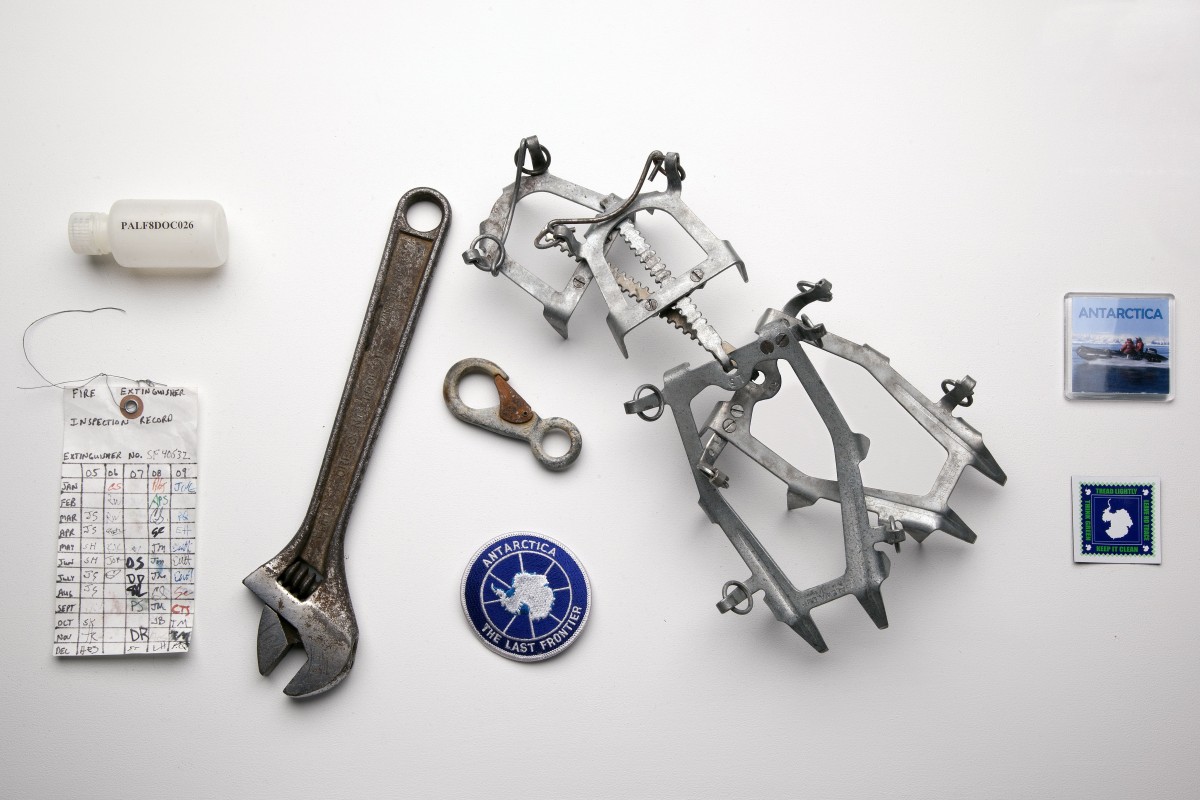In conversation with James Clegg, assistant curator of Talbor Rice Gallery
Like most Scottish galleries and museums, Talbot Rice Gallery is on the dawn of reopening after a year of closure. Talbot Rice saw the Covid-19 pandemic as an opportunity for a brand-new exhibition: The Normal, a collaborative exhibition showing how the work of twelve different artists and collectives responds to the times we have grown to call ‘normal’.
One piece, A People’s Archive of Sinking and Melting by artist Amy Balkin, engages with the public to recognise the local impacts of rising sea levels, coastal erosion and melting glaciers as a result of climate change. Since 2012, Balkin has called for the public to contribute any objects found in areas at risk; regardless of whether they are natural, manmade, precious or wasted. The archive has received contributions from all over the world, including Antarctica, Greenland, Venice and Nepal. Now, Scotland is engaging with the project, and the archive will grow as contributions will roll in throughout the summer over the duration of the exhibition.
One of the curators, James Clegg, spoke to me about the exhibition. All the artists have a different take on the overarching theme of Covid-19, and he mentioned how they will all engage with one another, creating a ‘complex, rich and diverse cross readings of a subject area, with lots of different strands and threads and knots’. Amy Balkin’s tangent is ‘planetary health’, as James described it. I loved this idea of climate change being described in a similar manner to the pandemic. Covid-19 is so often referred to in the context of human health, however it clearly affects planetary health as well. James underscored the ‘attention that people suddenly paid to nature’ during the first lockdown, and how this tied into the localised focus of Balkin’s project.
Many contributions to the international archive came from low-income countries like Nepal, which may be disproportionately affected by climate change. Many tourist guides and maps were contributed from Nepal because they had been made invalid as a result of the changing landscape; including glacial melting. This is the effect of not only climate change but increased tourism as well, so the maps ultimately ‘speak of the cause of their own misfortune’. However, Balkin’s project also highlights the inequality of climate change. Many contributions to the archive come from low-income countries because they are the most affected, ‘whereas high-income countries can offset their impact on environmental change’. This is also one of the contradictions that Amy Balkin has noted: the work has been shown in ‘developed’ countries, but those countries are not really making much effort to contribute themselves. This inevitably reflects the colonialist dynamics still present in global relations, with low-income countries being exploited for their resources as high-income countries claim economic profit and improve their protection against the climate effect.
James and I moved forward discussing the objects collected from Scotland. ‘The first one we got was someone who sent in a map of part of the isle of Eigg, which has now disappeared as a result of rising sea levels’. James also spoke to a canoeist who explores Scottish rivers and has been ‘collecting a lot of detritus’ on his routes. Descriptions and stories from the contributors accompany many of the donated objects giving them personal value and making Balkin’s work an opportunity in Scotland to ‘really connect people to things that are sinking and melting around us now’.
Climate-oriented art is not new, however James described how Balkin’s work is different in that it is actually ‘tied to activism and trying to get things done in law’. What she’s doing, ‘which perhaps a lot of artists aren’t doing, is building communities and awareness about the frameworks around us in relation to the environment’. This is one thing Balkin is very clear about; that Archive is listed as ‘Amy Balkin et al. It’s inclusive, it’s a people’s archive’. The descriptions are also those sent by the contributors, ‘so it’s their language, not Amy imposing an interpretation’.
The title Archive is also symbolic: these are something we associate with museums and institutions connected with collecting and preservation whereas this archive represents a collective of individuals and the failures of preservation. As James articulated, it highlights that ‘the power here is not with the institution’. Balkin herself describes some of the objects as ‘the ruins of global capitalism’; mass produced objects which have encroached on the natural landscape. I also think it nods towards a sad contradiction: the planet itself is an archive of billions of years’ worth of history, from fossils to trapped CO2, yet art like this is creating an archive of our destruction of it.
I asked James how he hoped audiences would interact with this piece; ‘I don’t think Archive proposes an easy way out of this situation but I do hope that through an encounter with objects, because they carry stories and have a materiality[…], that people will leave with this sense of having been in contact with something[…]with this environmental change that is actually palpable’. He also believes climate-oriented art will become much more prevalent, and that artists engaging with it in future will have to ‘consider the different shareholders in this environment’, like those living in low-income countries ‘who take up the brunt of climate change’. Discussing Archive has made me realise that we are all shareholders in the environment, and climate change is having a rapid effect on us all, even here in Scotland.
[Talbot Rice Gallery encourages all contributions – if you want to be part of the People’s Archive, information can be found on their website.]
Image Amy Balkin et al., ‘A People’s Archive of Sinking and Melting’, (2012-ongoing), Anvers Island, Antarctic Collection (Neus, Burns, Kovats). Courtesy of the Archive

